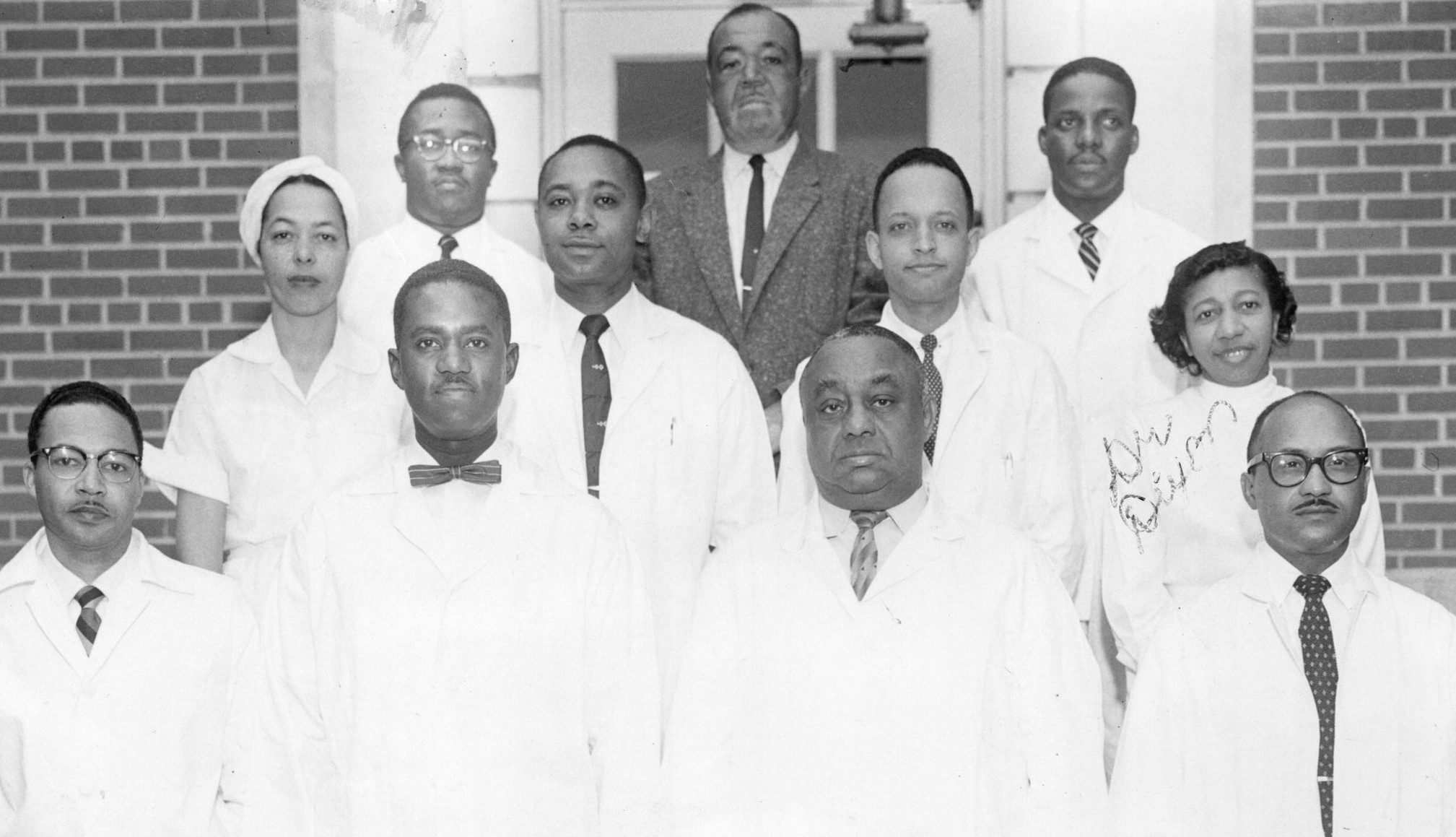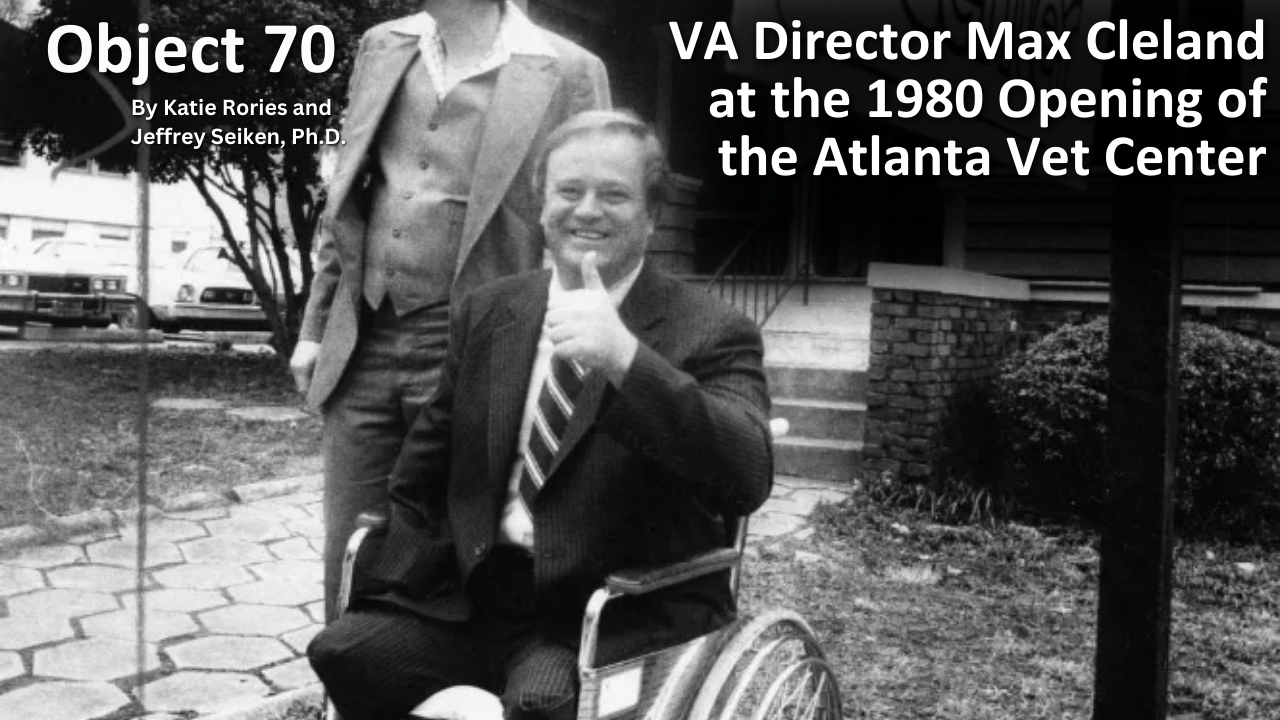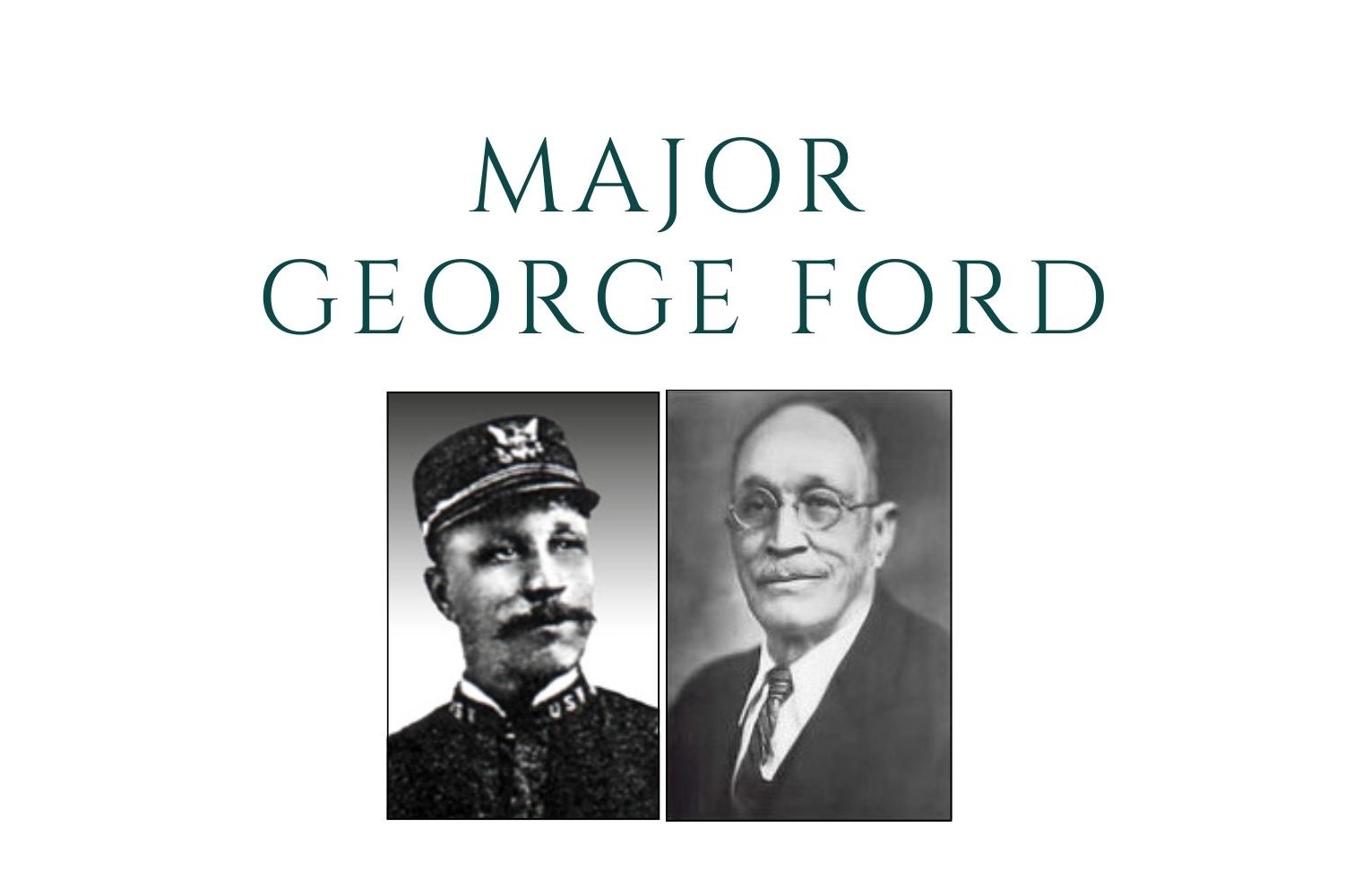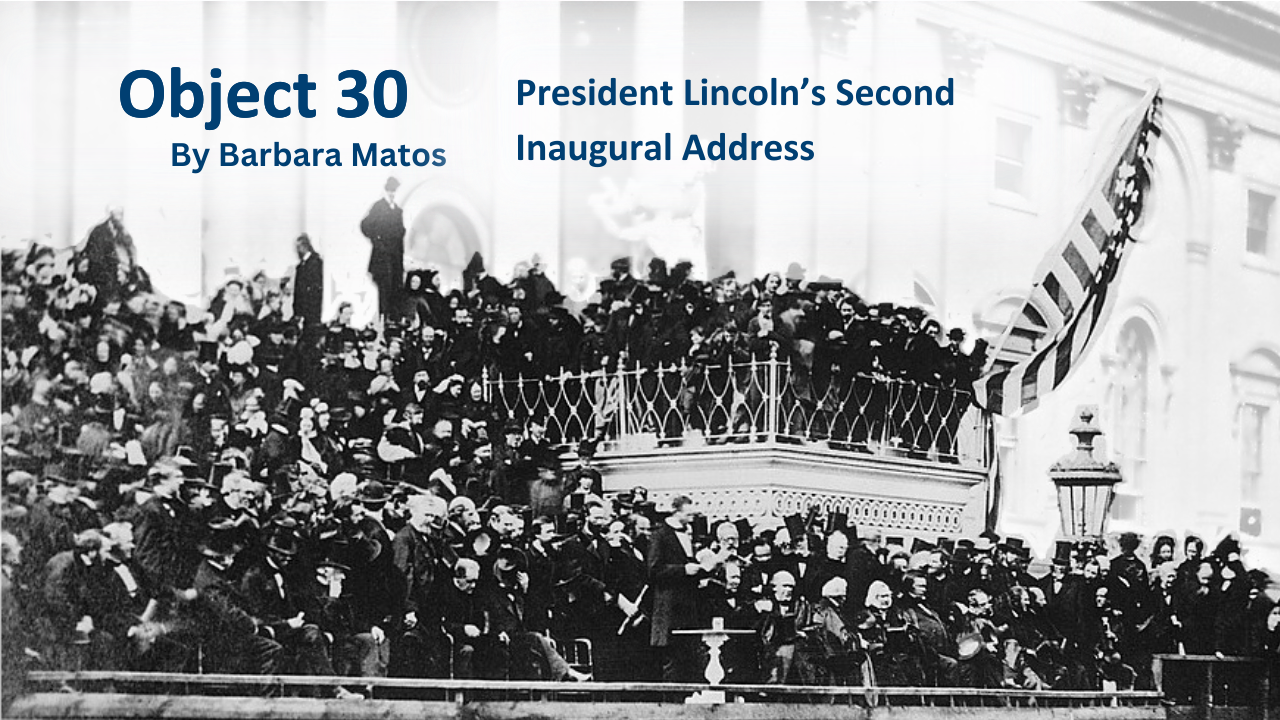
Featured Stories
The Historic Streets of the VA Medical Center in Prescott, Arizona
Ever wonder where some historic street names come from? That's the question that pops up at the VA Medical Center in Prescott, Arizona. Multiples names are displayed on white signs, such as Holmberg, Allee and Whipple. Who are they? Dive in and find out.

Featured Stories
Celebrating Women Veterans, Past and Present: Dr. Ivy Brooks
As a historian, connecting the present day with past events is a process fundamental to the profession. Researchers typically rely on information contained in archives and databases, but sometimes the most relevant details are provided by people. This was the case as a newly arrived historian at the Tuskegee VA Hospital attempted to ascertain details surrounding the life and career of Dr. Ivy Brooks, former director of radiology.

Curator Corner
What’s in the Box? 2nd Lt. George Fair’s 140 Year Journey
It started with a medal. Later on a button. Then, walks along the trails at the Dayton VA Medical Center and to the National Cemetery. Finally, it ended at a tall monument at the intersection of Monument Avenue and Main Street in downtown Dayton.
Well, it didn't quite end there. This was just the beginning in learning about the soldier, whose likeness sits atop the Montgomery County Soldier's Monument and stands watch at the main entrance to the Dayton VA Medical Center.
This is the story of a curator diving into the story of George Fair, Dayton's Veteran model and a 140 year journey.

Curator Corner
What’s in the Box? Librarian Helen Carson
It isn’t often that researchers who work with historic objects get to know the people who used those objects every day. Sometimes we get lucky and can link artifacts to certain facilities or buildings on a historic VA campus, but usually we must look for more hidden lines of evidence to figure out how an object fits into the history of those who care for our Nation’s Veterans. As nice as it would be, it isn’t as if many artifacts turn up labeled with their owners’ names! So, imagine my surprise when my teammates and I began sweeping Putnam Library for any historic objects left behind before the building is closed for renovation, and found just that.
As far as artifacts go, its story seemed simple: book presses like these would have been used to help maintain and repair the thousands of books read in Putnam Library ever since it first opened in 1879. The day that I first got up close and personal with the press, I noticed a woman’s name scraped into the black paint of the platen (the technical name for the big metal plate used to hold books together). It said “Helen Carson” in big, legible letters. As we carefully transported the heavy press down the many stairs inside Putnam Library, I looked at the name and thought “Hm…wonder who that is?”.

Featured Stories
Drs. Ivy Brooks and Mildred Dixon: Challenging the Status Quo
In the mid-twentieth century, the lives of Dr. Ivy Brooks and Mildred Dixon, two trailblazing Black women physicians, converged at the Tuskegee, Alabama, VA Medical Center. Doctor's Ivy Roach Brooks and Mildred Kelly Dixon shared much in common. Both women were born in 1916 in the northeastern United States and received training in East Orange, New Jersey. They both launched careers in alternate medical professions before entering the fields of radiology and podiatry, respectively. Pioneering many “firsts” throughout their professional lives, both women faced and overcame the rampant racism and sexism of the era.

History of VA in 100 Objects
Object 70: VA Director Max Cleland at The 1980 Opening of The Atlanta Vet Center
After the Vietnam War, the nation was eager to put the divisive and unpopular conflict behind it. However, the 3.4 million Veterans who served in the Vietnam theater did not have that luxury. One of those Veterans was Max Cleland who lost his legs in the war. He made it a mission to advocate for his fellow Veterans, who struggled with the aftereffects of the war. Eventually, this led to Cleland turning to politics and at 34 being appointed as the youngest Administrator for the Veterans Administration.
During his tenure at VA, Cleland delivered on his goal of providing readily accessible mental health and readjustment counseling designed expressly for Vietnam Veterans. In 1979, VA launched an initiative called Operation Outreach to establish community-based Vet Centers across the country. In one year there were 91 Vet Centers. Today there are over 300.

Featured Stories
Tuskegee’s Librarian: Dr. Sara Marie Johnson Peterson Delaney
Dr. Sara (Sadie) Marie Johnson Peterson Delaney was a trailblazer in promoting libraries and literacy – and worked at what would eventually become today’s VA. She was the Chief Librarian of the VA hospital in Tuskegee, Alabama, for 34 years.

Featured Stories
Brig. Gen. Frank Hines – 1st VA Administrator
Frank Hines was the longest tenured VA leader, from 1923 until 1945 and end of World War II. He led two different Veteran agencies, first the Veterans Bureau and then the Veterans Administration. Despite constant challenges and changes to the system, he was a stable leader for a new federal agency.

Featured Stories
George Ford – Veteran and National Cemetery Superintendent
George Ford was a Veteran of the famed "Buffalo soldiers" after the Civil War. A U.S. law gave preference to employ Veterans to oversee the growing cemetery system for Union dead. So in 1878, Ford became one of the first Black Veteran superintendents of a national cemetery.

Featured Stories
Delphine Baker and Emma Miller: Women and the Creation of the National Home for Disabled Volunteer Soldiers
After the Civil War, thousands of Volunteer Soldiers needed care. Two women, Delphine Baker and Emma Miller were critically important to the creation and operation of the National Home for Disabled Volunteer Soldiers, the governments answer to providing healthcare to the Union volunteers during the Civil War.

Featured Stories
Dr. Rosalyn Yalow: Groundbreaking VA Medical Researcher and Nobel Prize Laureate
VA History Exhibit - In 1977, Dr. Rosalyn Yalow, a medical researcher and doctor at the Bronx VA Hospital, became the second woman awarded the Nobel Prize for Physiology or Medicine. In an exhibit crafted by VA History intern Parker Beverly, learn how Dr. Yalow strived to break through gender barriers in the medical field to become an expert in radioimmunoassay.

History of VA in 100 Objects
Object 30: President Lincoln’s Second Inaugural Address
On March 4, 1865, as the Civil War entered its final weeks, President Abraham Lincoln second inaugural address was delivered from the East Portico of the U.S. Capitol. Four years earlier, he had stood in the same spot when he spoke to the crowd that had assembled for his swearing in as the sixteenth President of the United States.
This time, his speech focused on the task ahead for the country, a stirring call for healing and reconciliation. A significant section of his speech was a solemn promise to those who had fought to restore the Union: "...let us strive on to finish the work we are in; to bind up the nation’s wounds; to care for him who shall have borne the battle, and for his widow, and his orphan—to do all which may achieve and cherish a just and a lasting peace, among ourselves, and with all nations."


